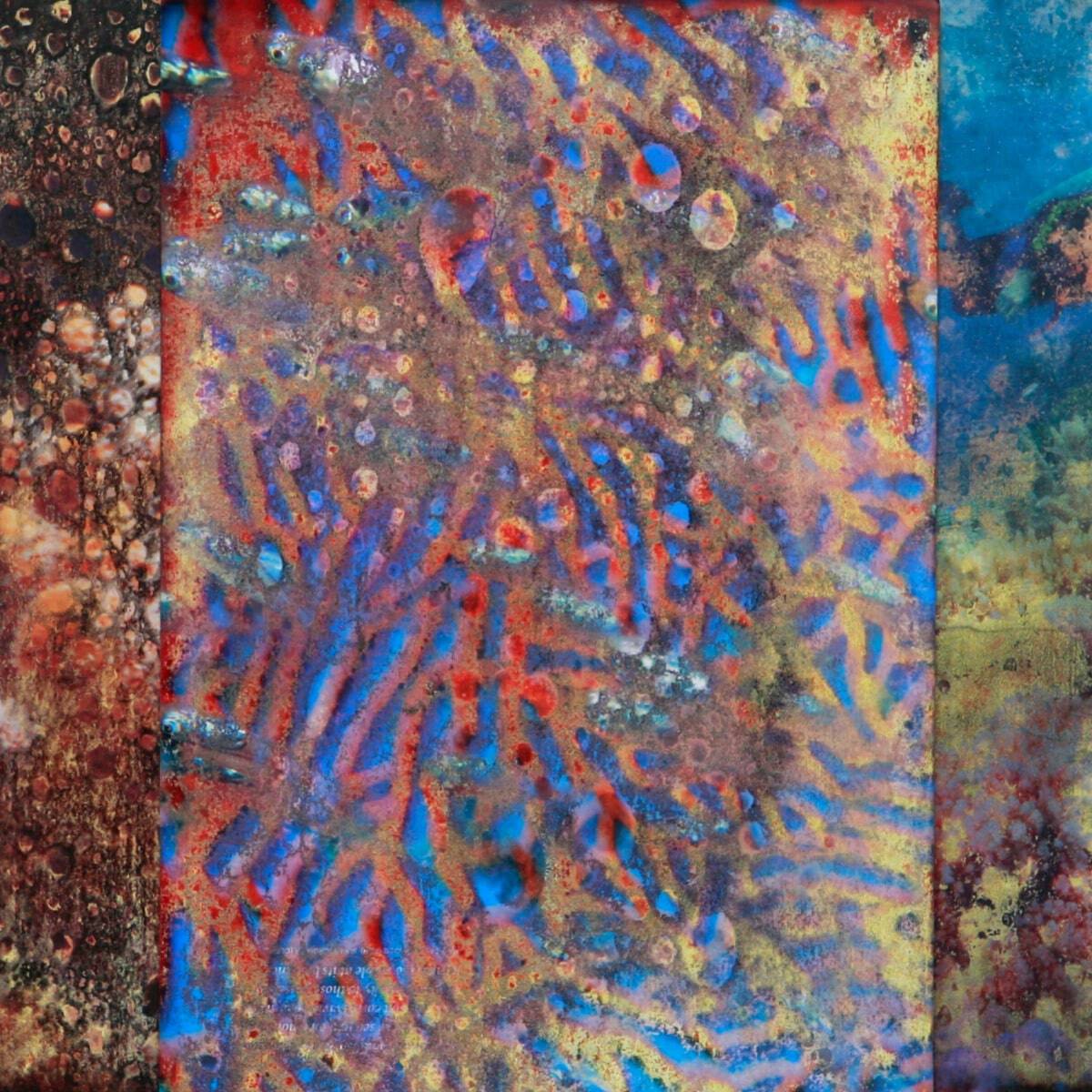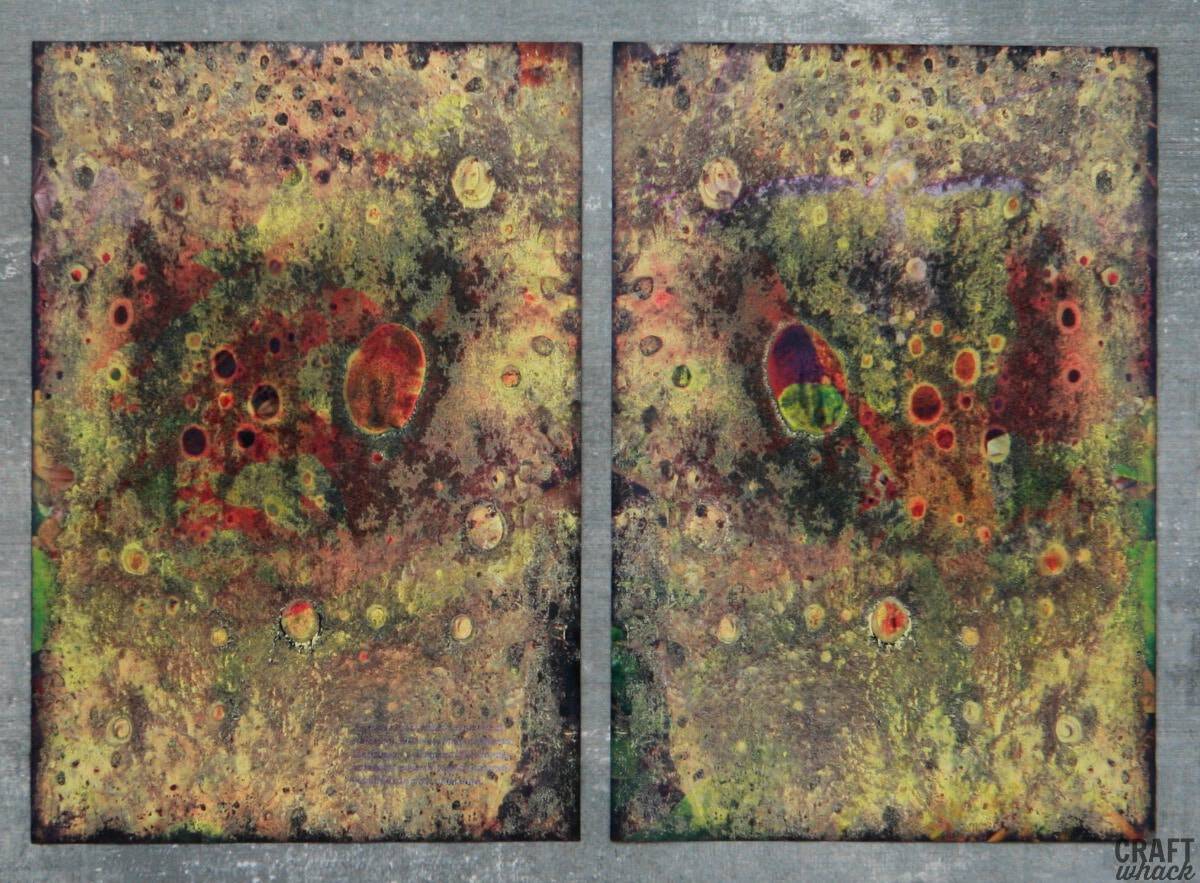
There is a technique of ‘melting’ the ink on National Geographic magazines with Citrasolv that has been big in the art journaling community for a while, so I wanted to try my hand at it. I knew I would get some cool effects, but I didn’t realize how obsessed I would become with this.
The original technique has you spraying Citrasolv concentrate (a natural, orange-smelly cleaner) on all the pages of a National Geographic magazine, and ripping the pages out after the ink has ‘melted’ somewhat.
Here’s how you do that, and a whole bunch of tips at the end on how to make sure you get successful Citrasolv/Nat Geo pages, because I need you to try this. Seriously. Do it. (It’s as fun as making Gelli Prints.)
National Geographic Citrasolv Technique
Supplies
National Geographic magazines (I’ve heard you get different results from using different decades of magazines. Mine were from 2011.)
Citrasolv concentrate – Make sure you buy the concentrate or it won’t work! Also, I used almost an entire 8 oz bottle on one magazine, so go for a larger size
Large casserole dish or tray to contain the mess while/after you spray the magazine
Big roll of paper or even flattened cardboard, or clips and laundry line to dry your pages
Optional:
Rubbing alcohol, textures, stencils, inks, gesso
Bonus: Incidentally, I have started using Citrasolv as a cleaner in my house, too. It smells orangey-delicious and works beautifully for so many cleaning purposes. Plus it’s natural, so pets and kids are safe. When does this ever happen with art supplies?!
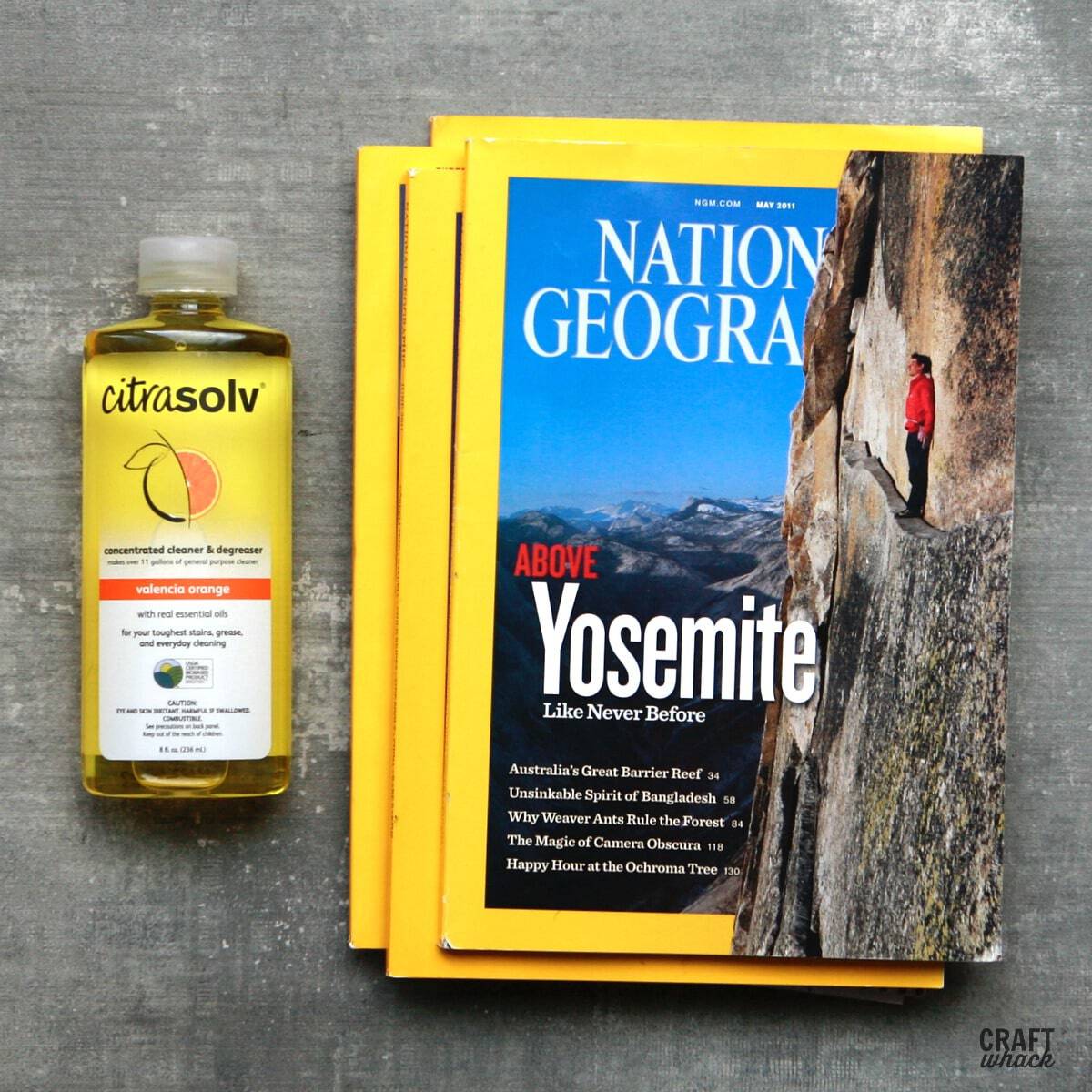
Directions
- Spray your pages with Citrasolv in the spray bottle all over the pages of the magazine while they’re still intact.
- Close up your magazine and let it steep for about 15-20 minutes before you peek.
- Check on it every few minutes until the ink looks runny and cool.
- Tear out each page from the magazine and lay it flat to dry. They tear out really easily.
- Optional: spray the pages with fixative to set the ink.
- Do with them what you will. (Hint: Look down 3 paragraphs.)
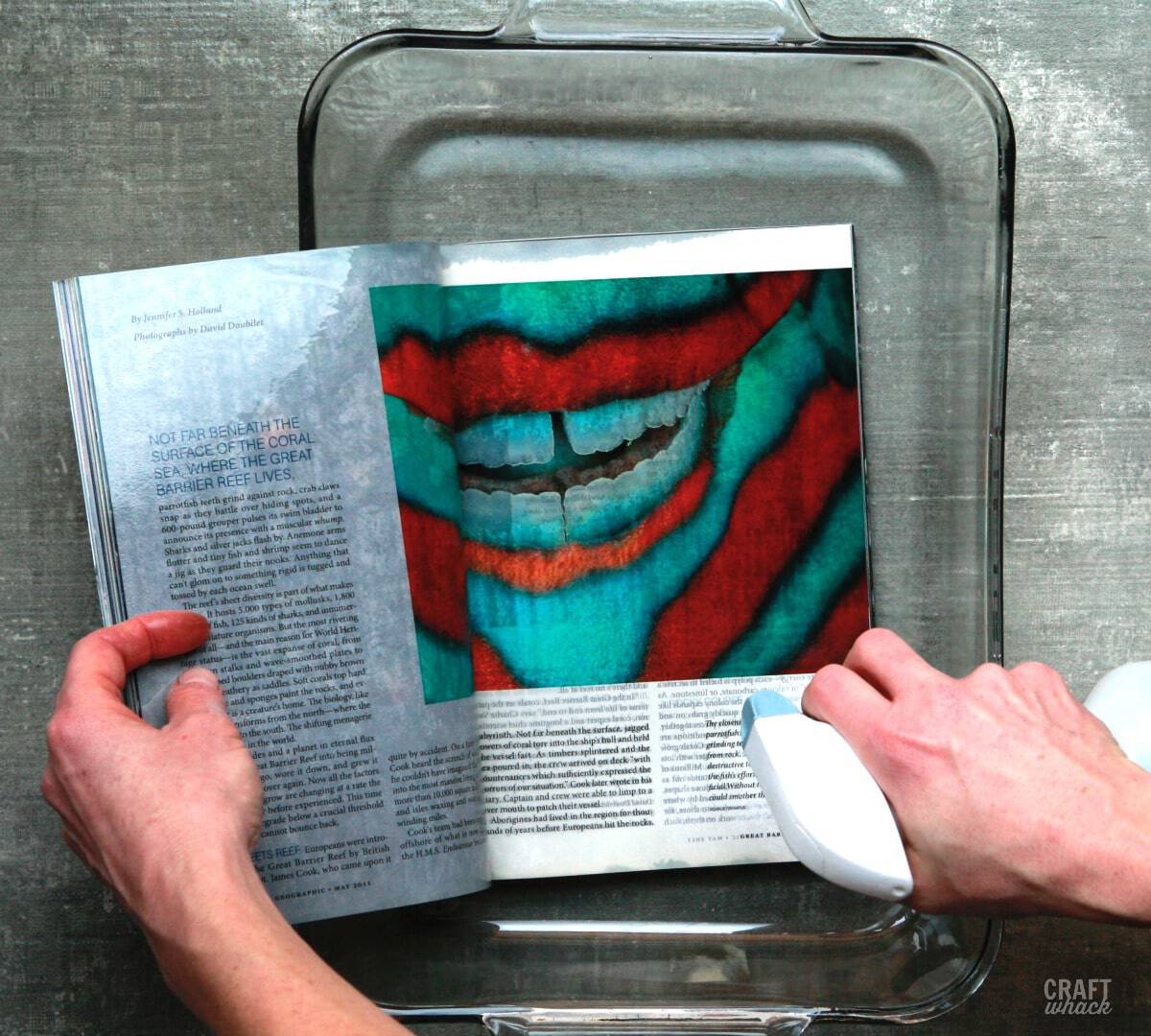
Okay, this is my version of showing you family vacation photos for hours. I can’t help it. So many of these turned out BEAUTIFUL. Funnily, some pages did nothing, and some changed at different rates, so you can see a few recognizable images in some of the pages, while others are pure abstract gorgeousness.
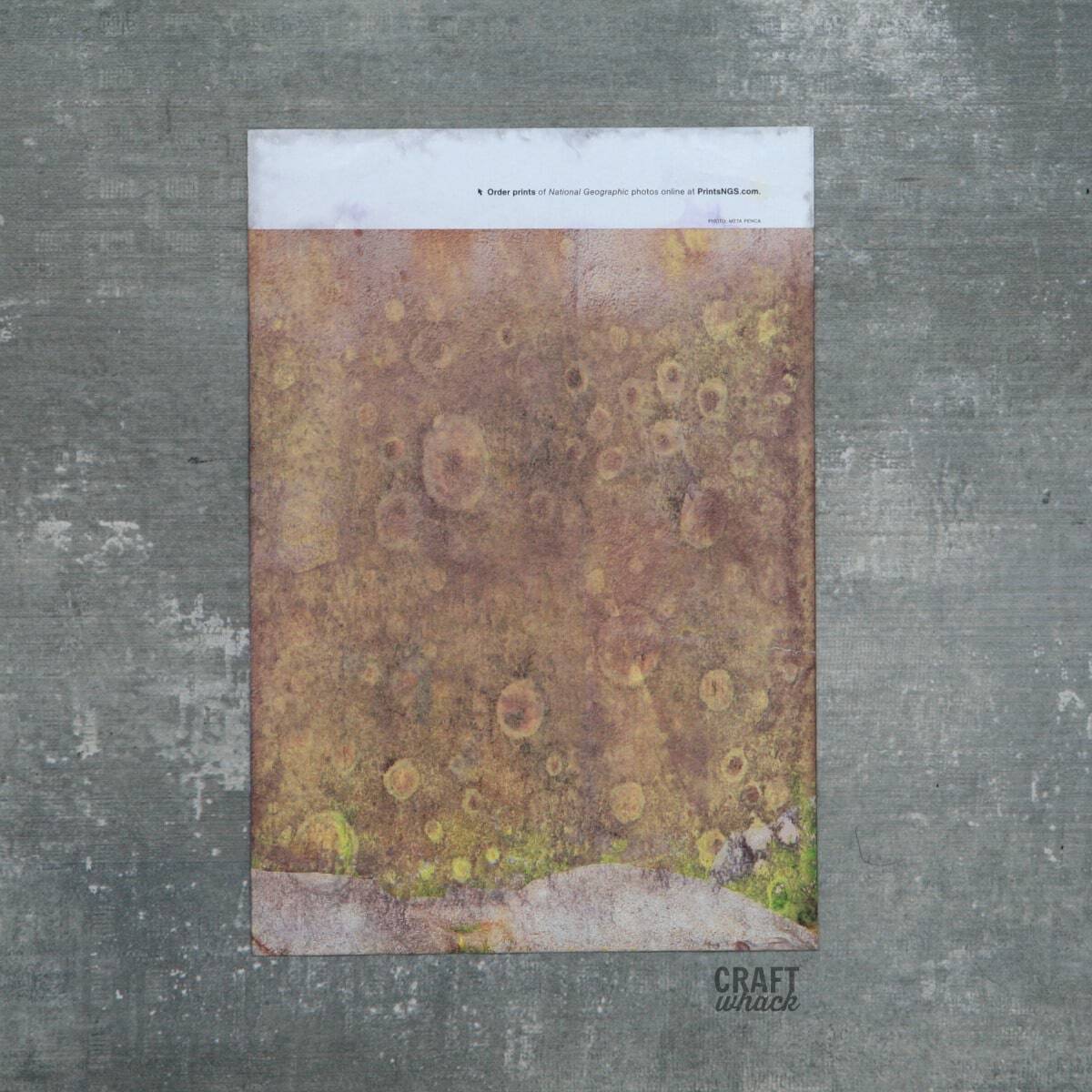
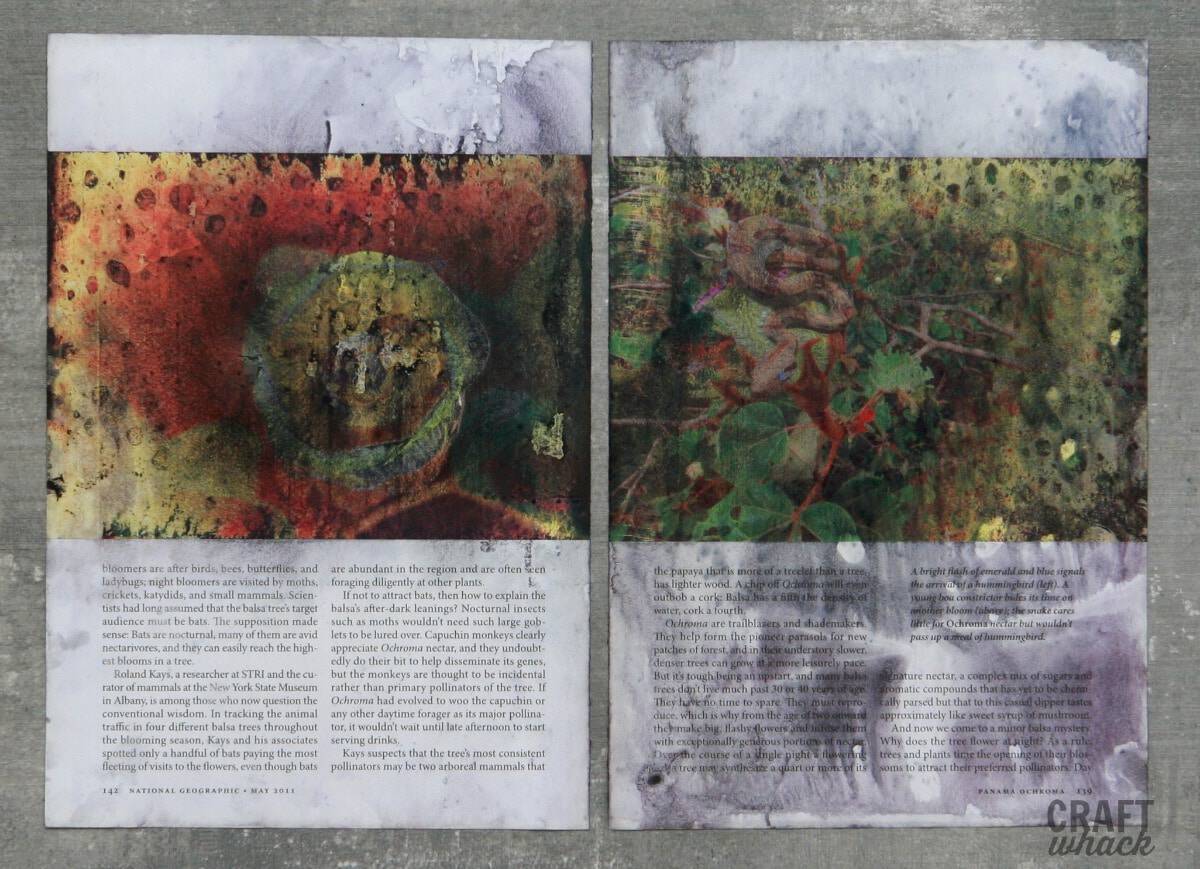
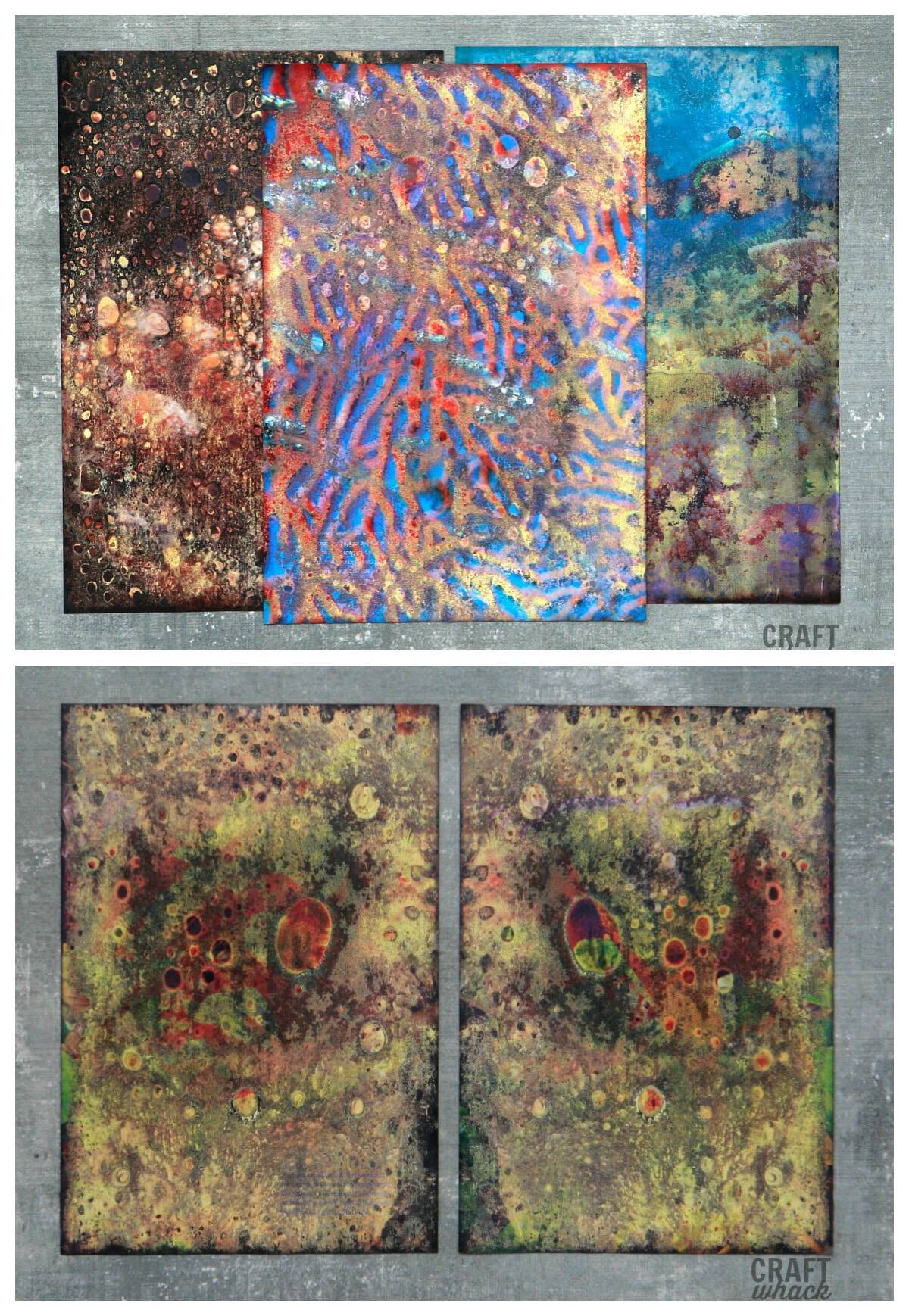

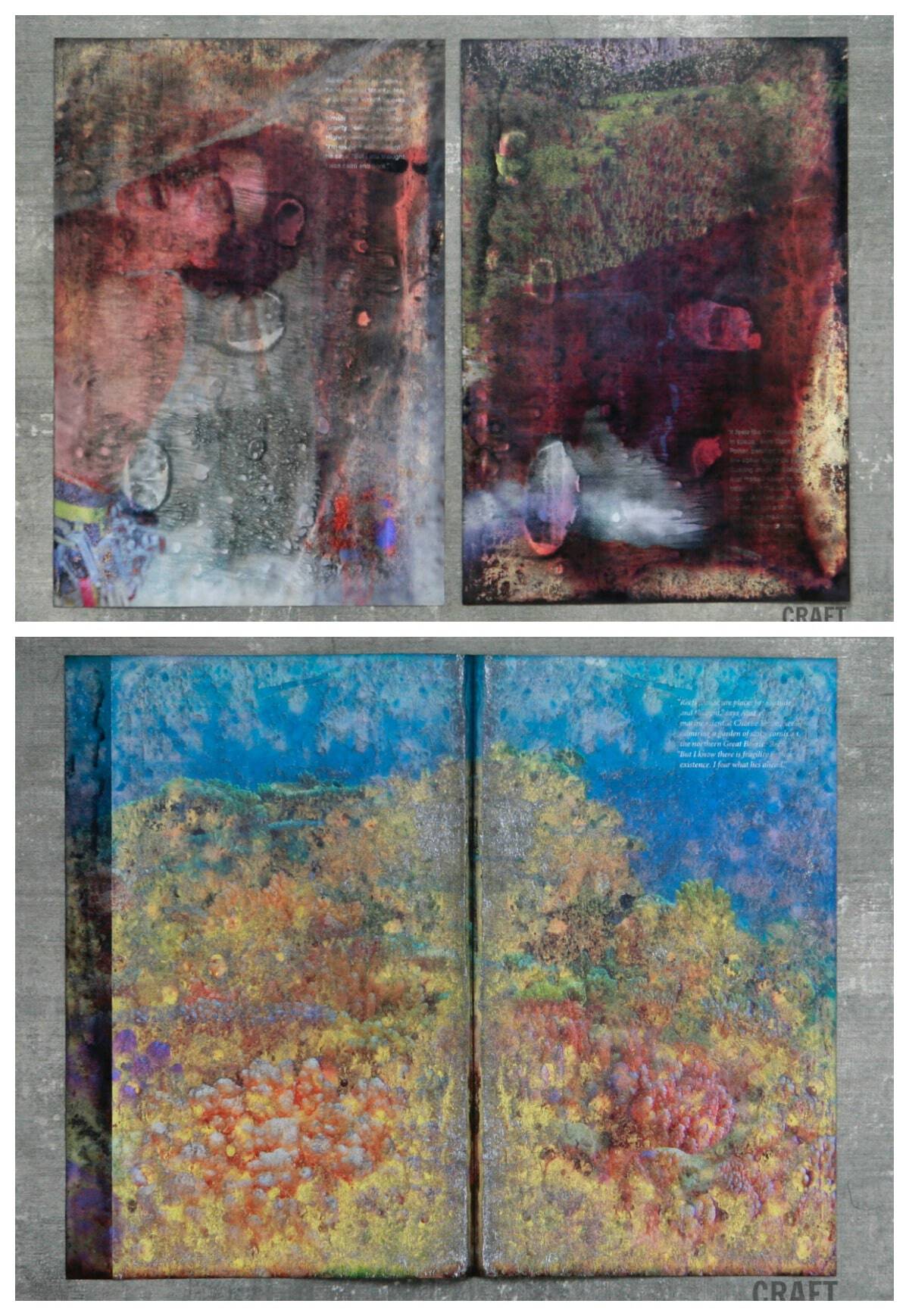
RIGHT??? Aren’t you ready to start this business?
Where to Find Old National Geographics
Thrift stores, garage sales, eBay, or neighborhood message boards. I got mine from posting in my neighborhood message board that I was looking for some. A woman responded and said she had some she didn’t want anymore. She left them on her porch in a cute little bag and I never had to make human contact. #introvertwin Otherwise, they’re $13 a magazine.
Where to buy Citrasolv
This is a big pain in the butt to find out in the stores, so I buy mine from Amazon. The price is obviously better if you buy a larger bottle, and remember, you can use it for cleaning your house if you don’t use the whole bottle. What other art supply can do that?!
What to do With Your Citrasolv Magazine Pages
This is my favorite thing to do: brainstorm ideas. You can obviously keep your pages as is and hang them all over your walls. Or here are some more ideas:
- Collage with them
- Cut them up and weave them together
- Draw on them
- Paint on them, using the melty page as a background
- Use gesso to paint over a stencil on them so you get a cool matte white design to contrast with the ink.
- Make a handmade artist’s book and use them as the covers
- Fold them into boxes or origami sorta things
- Sew some together with embroidery thread to make cool sculptural art
- Frame some with photos mounted on them to use as pretty backgrounds
- Scan your favorites to use in digital art projects
More Tips:
As with any art technique, I suggest making a batch of straight-up pages to get familiar with the technique before you go crazy experimenting. But if you’re a total rebel badass, dive right on into the pages and experiment whenever you want to.
Although the smell is wonderful, since it’s a concentrate, it’s strong, so I suggest still working in a ventilated area if you’re sensitive to smells. (Think about pets and kids, too.)
I’ve heard that Vogue magazine and the New York Times magazine works as well. They use the same clay-based ink that Nat Geos do. I’ve used Vogue for acrylic gel medium transfers, so now I want to try that with Nat Geo.
Actually, if you like this technique, you’ll have fun with this acrylic gel medium transfer project, or even acrylic paint skins.
Spray the dry pages with a fixative if you will be using them in collages or other artwork, so the ink doesn’t smudge.
Lay out more paper for drying than you think you might need. If you do a lot of pages (and you’ll want to), you need a ton of room for drying. I used giant cardboard boxes cut flat.
Spray a lot of pages! As this is a process that relies a lot on luck, some of the pages will turn out great, and some will just suck. You want a bunch of options to choose from.
With that said, you don’t have to spray the entire magazine at one time- try a few pages at first if you don’t have a ton of space. I sprayed the front half of the magazine, and the back half started to soak up the Citrasolv as it sat in the casserole dish. I went through and sprayed the back pages about 20 minutes in, so I got some varied effects on some of these pages.
I’m not sure if CitraSolv is available outside of the U.S. yet. If you live elsewhere, you might want to experiment with turpentine or odorless turpentine. Obviously in a well-ventilated area!
Experiment with how long you leave the pages brewing, sometimes too long is not as good, and some pages might dry together. I found some rogue pages stuck together later and pried them apart, which was a fun surprise.
You can play around with the pages while they are still wet by stamping textures or stamps into the ink, using tools to move the ink around on the page, or anything else you can think of with your creative brain.
If you find your pages are all too uniform and dark, try repeating the whole process on a few pages or rubbing some of the ink off with a paper towel while it’s still wet.
I could go on and on…. have fun!
Nitrile Exam GlovesBuyCitra-Solv ConcentrateBuy3 Pack Bottles with SprayerBuyBrown Kraft Paper RollBuyKrylon Workable Fixatif SprayBuyOld National GeographicsBuy
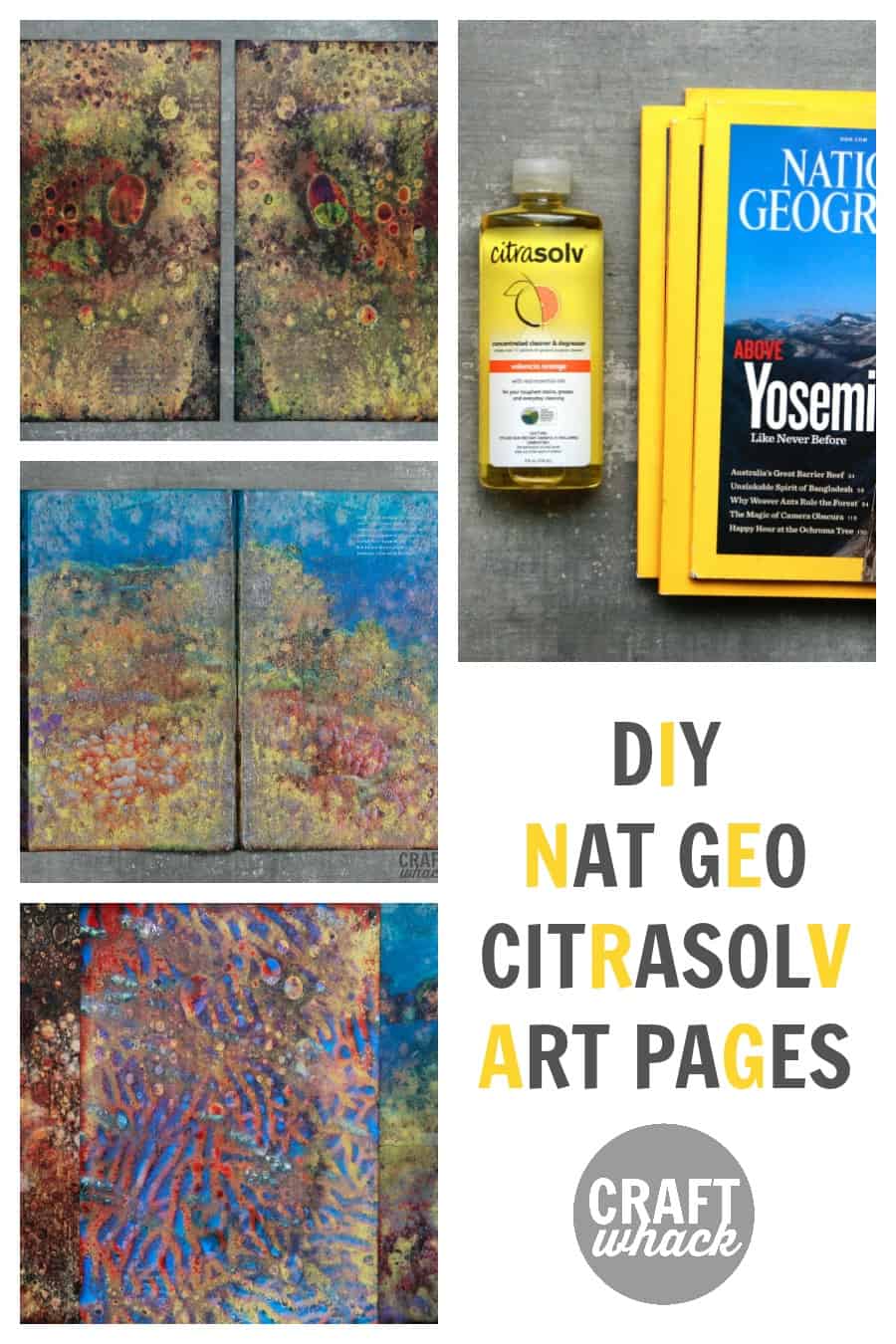
Comments
0 comments

